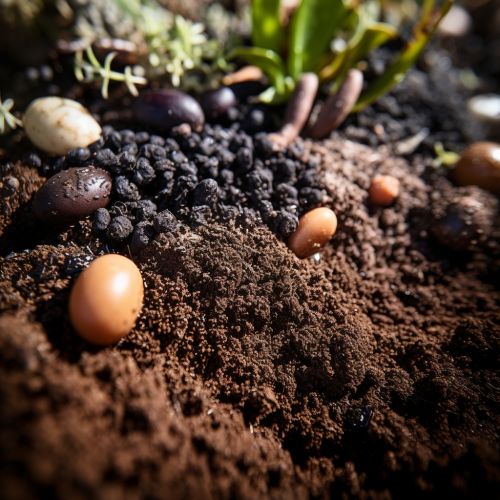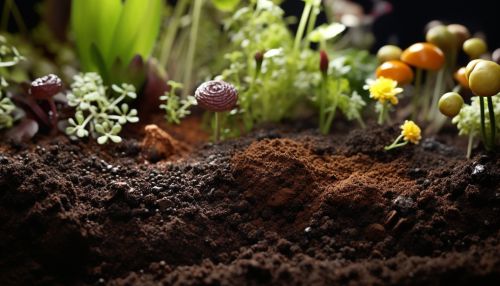Mechanisms of Microbial Biotechnology in Agriculture
Introduction
Microbial biotechnology is a branch of biotechnology that applies microbial sciences to create and improve industrial products, processes, and systems. In the context of agriculture, microbial biotechnology can be used to enhance crop productivity, improve soil fertility, and manage plant diseases. This article will delve into the mechanisms of microbial biotechnology in agriculture, exploring the role of microorganisms in promoting plant growth, enhancing soil fertility, and controlling plant diseases.


Microorganisms and Plant Growth Promotion
Microorganisms play a crucial role in promoting plant growth. They do this through several mechanisms, including nitrogen fixation, phosphate solubilization, and production of plant growth-promoting substances.
Nitrogen Fixation
Nitrogen fixation is a process by which certain types of microorganisms convert atmospheric nitrogen into a form that plants can use for growth. This process is primarily carried out by bacteria known as nitrogen-fixing bacteria, which include species of Rhizobium, Azotobacter, and Cyanobacteria. These bacteria possess the enzyme nitrogenase, which catalyzes the conversion of atmospheric nitrogen into ammonia, a form of nitrogen that plants can readily absorb.
Phosphate Solubilization
Phosphate solubilization is another important mechanism by which microorganisms promote plant growth. Many soils contain large amounts of insoluble phosphates that plants cannot utilize. However, certain microorganisms, known as phosphate-solubilizing microorganisms, can convert these insoluble phosphates into soluble forms that plants can absorb. These microorganisms produce organic acids that dissolve the insoluble phosphates, making them available to plants.
Production of Plant Growth-Promoting Substances
Some microorganisms can produce substances that promote plant growth. These substances, known as plant growth-promoting substances, include hormones such as auxins, gibberellins, and cytokinins. These hormones can enhance plant growth by stimulating cell division, promoting root development, and accelerating seed germination.
Microorganisms and Soil Fertility
Microorganisms also play a key role in enhancing soil fertility. They do this through processes such as decomposition, nutrient cycling, and formation of soil aggregates.
Decomposition
Decomposition is the process by which microorganisms break down organic matter into simpler substances. This process is carried out by a variety of microorganisms, including bacteria, fungi, and actinomycetes. These microorganisms secrete enzymes that degrade organic matter, releasing nutrients that plants can absorb.
Nutrient Cycling
Nutrient cycling is another important process carried out by microorganisms. In this process, microorganisms convert nutrients from one form to another, making them available to plants. For example, bacteria and fungi can convert organic nitrogen into inorganic forms that plants can absorb. Similarly, certain bacteria can convert atmospheric nitrogen into a form that plants can use, a process known as nitrogen fixation.
Formation of Soil Aggregates
Microorganisms also contribute to the formation of soil aggregates. Soil aggregates are clumps of soil particles that are bound together by organic substances produced by microorganisms. These aggregates improve soil structure, enhance water retention, and increase soil fertility.
Microorganisms and Plant Disease Control
Microorganisms can also be used to control plant diseases. This is done through mechanisms such as competition, antibiosis, and induced systemic resistance.
Competition
In the soil, microorganisms compete with each other for resources such as nutrients and space. Some microorganisms can outcompete plant pathogens for these resources, thereby reducing the incidence of plant diseases. This mechanism of disease control is known as competition.
Antibiosis
Antibiosis is a mechanism by which one organism produces substances that inhibit the growth of another organism. Some microorganisms produce antibiotics that are toxic to plant pathogens. These antibiotics can suppress the growth of plant pathogens, thereby controlling plant diseases.
Induced Systemic Resistance
Some microorganisms can induce systemic resistance in plants. This is a mechanism by which the plant's immune system is activated, making the plant more resistant to diseases. Microorganisms that can induce systemic resistance include certain species of bacteria and fungi.
Conclusion
Microbial biotechnology has the potential to revolutionize agriculture by enhancing crop productivity, improving soil fertility, and managing plant diseases. Through mechanisms such as nitrogen fixation, phosphate solubilization, production of plant growth-promoting substances, decomposition, nutrient cycling, formation of soil aggregates, competition, antibiosis, and induced systemic resistance, microorganisms can contribute significantly to sustainable agriculture.
